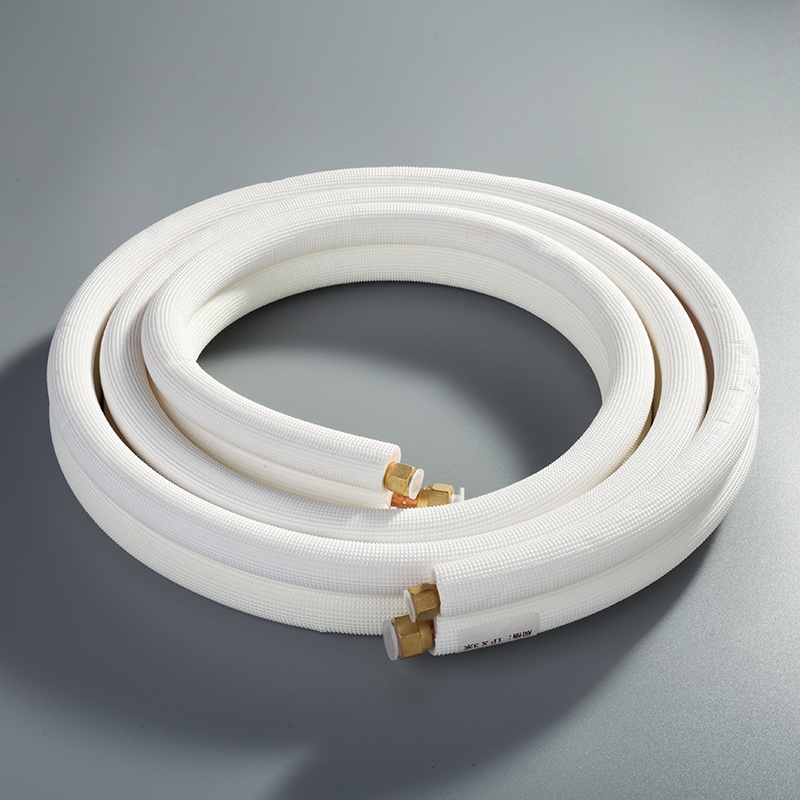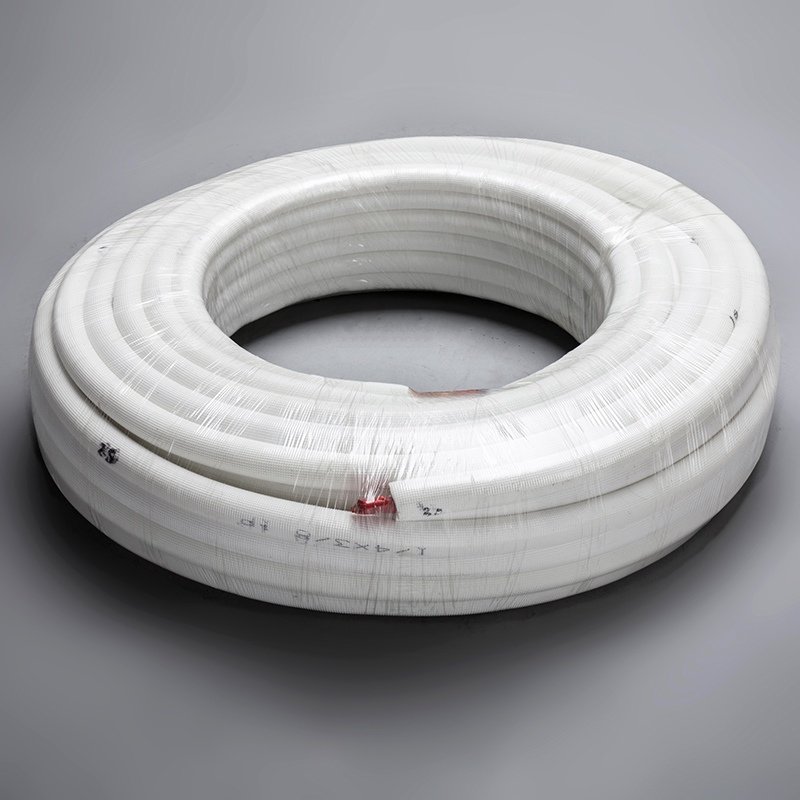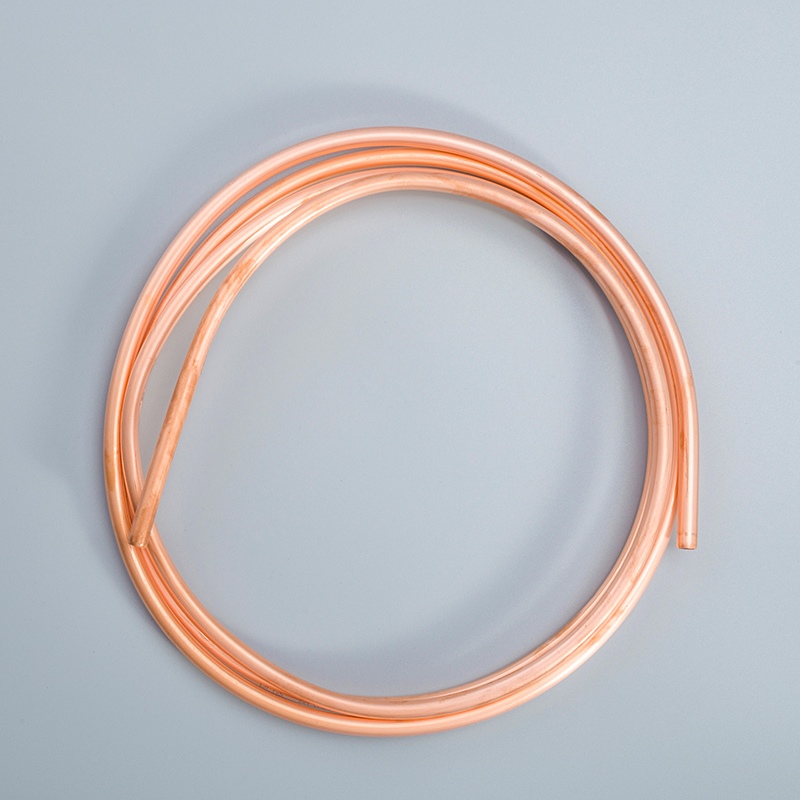Unveiling the Evolution of Copper Tubing in Air Conditioning

Copper tubing has played a pivotal role in the evolution of air conditioning technology. Its durability, corrosion resistance, and efficient heat transfer properties have made it an indispensable component in HVAC systems. Delve into the history of Copper tubing and its evolution in Air Conditioning technology to truly appreciate its significance. The International Copper Association highlights the use of smaller diameter, round copper tubes in air-conditioning and refrigeration applications, showcasing the versatility and effectiveness of this material.
History of Copper Tubing

Copper tubing has been a popular choice of material for plumbing, gas supply, and refrigeration applications. Its low cost and high strength make it an excellent option for overpressured systems such as those found in air conditioning and heating. These copper pipes and tubes are hollow, cylindrical sections of copper metal used for plumbing and piping systems. They are highly durable, corrosion-resistant, long-lasting, and require minimum maintenance.
Ancient Use
Early Examples: Copper tubing's use dates back thousands of years, with early civilizations recognizing its benefits in various applications. The durability and malleability of copper made it a valuable material for creating intricate piping systems.
Longevity and Durability: The longevity of copper tubing is evident in historical examples like the water plumbing system from the Pyramid of Cheops in Egypt that remains serviceable after 5000 years. This durability showcases the exceptional lifespan of copper pipes even under harsh conditions.
Industrial Revolution
Introduction of New Techniques: During the Industrial Revolution, advancements in manufacturing techniques revolutionized the production of copper tubing. Innovations like extrusion and rolling enabled the creation of seamless copper pipes, enhancing their structural integrity and efficiency.
Impact on Air Conditioning: The introduction of these new techniques had a profound impact on air conditioning technology. Seamless copper pipes became integral components in HVAC systems due to their reliability, longevity, and superior heat transfer capabilities.
Modern Developments
Seamless Copper Pipes: Modern developments have further improved the quality of copper tubing used in air conditioning. Seamless pipes eliminate weak points where leaks could occur, ensuring a continuous flow of refrigerant without interruptions.
Enhanced Durability: Manufacturers have enhanced the durability of copper tubes through innovative processes that increase resistance to corrosion and wear. These improvements have extended the lifespan of air conditioning systems while maintaining optimal performance.
Technological Advancements
In the realm of copper tubing manufacturing, technological advancements have significantly influenced the efficiency and effectiveness of air conditioning systems. The integration of innovative techniques has propelled the evolution of copper tubing, enhancing its performance and durability in HVAC applications.
Manufacturing Techniques
Extrusion
The process of extrusion plays a vital role in shaping copper tubes with precision and consistency. By forcing the metal through a die under high pressure, manufacturers can create seamless tubes with uniform dimensions. This method ensures that each copper tube maintains structural integrity and optimal functionality, meeting the stringent requirements of modern air conditioning systems.
Rolling
Rolling is another essential manufacturing technique that contributes to the production of high-quality copper tubing. Through this process, copper billets are passed between rollers to reduce their diameter and achieve the desired thickness. Rolling allows for the creation of seamless tubes that exhibit superior strength and durability, making them ideal for use in demanding HVAC environments.
Benefits in Air Conditioning
Heat Transfer Capabilities
Copper tubing stands out for its exceptional heat transfer capabilities, making it an ideal choice for air conditioning applications. The thermal conductivity of copper enables efficient heat exchange between refrigerants and air, ensuring optimal cooling performance. By facilitating rapid heat dissipation, copper tubes help maintain comfortable indoor temperatures while maximizing energy efficiency.
Anti-Corrosive Properties
One of the key advantages of copper tubing in air conditioning is its inherent resistance to corrosion. Unlike other materials like aluminum, copper can withstand oxidation and environmental factors without deteriorating over time. This anti-corrosive property ensures that air conditioning systems remain free from leaks or structural damage, prolonging their lifespan and reducing maintenance costs.
Current Applications

Residential Air Conditioning
Copper tubing plays a crucial role in residential air conditioning systems, particularly in small standalone units. Delve into the history of Copper tubing and its evolution in Air Conditioning technology reveals how these compact systems rely on durable copper pipes for efficient operation.
Small Standalone Units:
In residential settings, small standalone air conditioning units are popular for their portability and ease of installation. These units typically utilize copper tubing to connect the indoor evaporator and outdoor condenser units seamlessly.
The use of Mandev copper pipe and tubes ensures reliable performance in these compact systems. With options like MT - Eco Self Connect and MT - Eco Self Connect +, homeowners benefit from high-quality materials that guarantee long-term functionality.
Connection of Units:
The connection between indoor and outdoor components is vital for the proper functioning of residential air conditioning systems. Copper tubing facilitates the transfer of refrigerant between these units, ensuring efficient cooling performance.
Copper tubes for chiller, VRF, VRV, AC, ductable air conditioning, such as those offered by Mandev, provide homeowners with durable solutions that withstand varying environmental conditions. These tubes come in different diameters to accommodate diverse system requirements.
Commercial Air Conditioning
In commercial settings, where air conditioning demands are more extensive, copper tubing continues to be a preferred choice due to its reliability and longevity. Large-scale air conditioning systems rely on robust copper pipes to deliver consistent cooling performance.
Large-Scale Systems:
Commercial buildings often require sophisticated air conditioning setups to maintain comfortable indoor environments. These systems incorporate intricate networks of copper tubing to ensure efficient heat exchange and temperature control.
Copper components in air-conditioning systems have been a staple in commercial projects for their proven track record of durability and performance. The use of hardened copper tubing is common in water lines and refrigeration applications within large-scale HVAC systems.
Efficiency and Longevity:
Efficiency is paramount in commercial air conditioning applications where energy consumption directly impacts operational costs. Copper tubing's superior heat transfer capabilities contribute to the overall efficiency of these systems by enabling rapid cooling cycles.
For businesses looking to invest in sustainable HVAC solutions, opting for copper components offers long-term benefits. The anti-corrosive properties of copper ensure minimal maintenance requirements, leading to cost savings over the system's lifespan.
The evolution of copper tubing in air conditioning has been remarkable, showcasing advancements in manufacturing techniques and applications.
Copper pipes excel in heat conductivity compared to other materials, making them a preferred choice for HVAC systems.
K copper tubes are ideal for high internal water pressure projects, while M copper tubes offer flexibility and corrosion resistance in plumbing installations.
Future trends may focus on enhancing the efficiency and sustainability of copper tubing, ensuring continued innovation in air conditioning technology.
See Also
Revealing the Progression of Copper Tubing in Building
Exploring Efficiency: Copper vs. Aluminum Piping in HVAC
Revealing the Future: Copper Tubing Coil Technological Advancement
Simple Guide: Professional Installation of HVAC Copper Piping
Revealing the Environmental Impact of Dual Copper Tubing Coils


